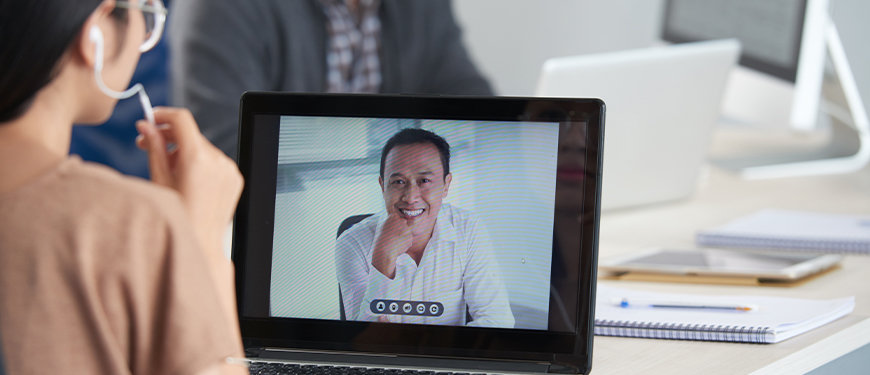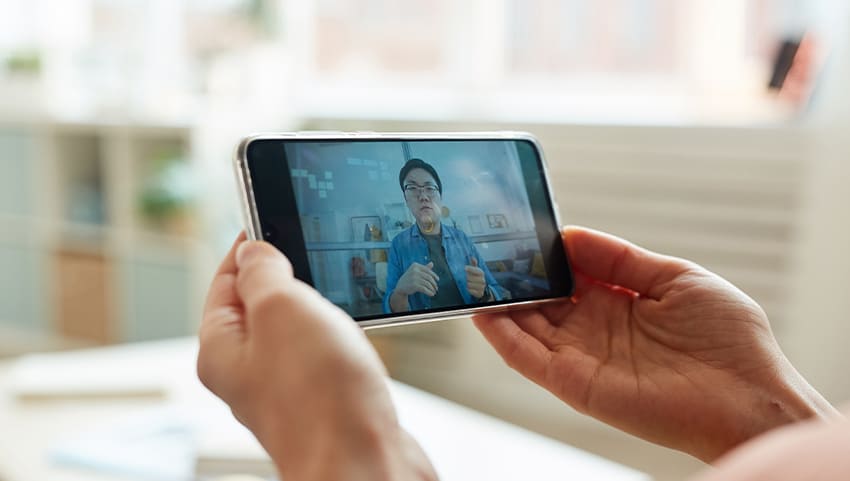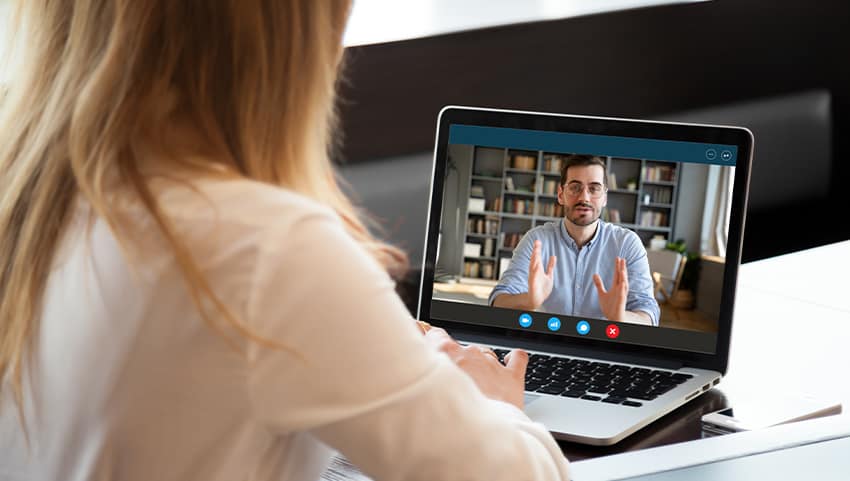4 Ways to Maximize Video-Based Learning in L&D

Video is being adapted for the new normal in learning and development. The success of video-based learning is largely attributed to it being accessible and memorable, according to recent research from Video Arts. In addition, videos can get to the point of need very quickly, a key attribute in a time of accelerating and significant change.
Addressing the need for on-demand content with video
When asked what types of learning content have been most successful in supporting their organization during the pandemic, the greatest proportion of learning professionals cited video content as clear winner. The next most successful types of learning identified by learning professionals were curated content and mobile learning.
Learning and HR professionals addressing the learning needs of an increasingly dispersed workforce have seen video shift from being a classroom resource to a resource for delivering effective learning content anytime, anyplace, through mobile devices.

Changing the consumption of video content
The way in which we consume video has changed. There is increasing affinity for short videos, even seconds-long ones, such as those on Instagram or Tiktok (indeed the latter has 800 million active users creating and sharing short videos). Most people encounter multiple video touchpoints across a whole range of different platforms every day, from TV to social media.
Another recent change – there is now often a social element to our viewing habits, even when we’re watching on our own devices, when physically alone. Increasingly, individuals view videos while chatting with friends online about what they are watching. Leveraging these trends to create engaging learning content is the challenge facing L&D professionals.
Video learning for L&D: How to get the most out of it
Recently, Speexx and Video Arts CEO Martin Addison presented a Masterclass Webinar ‘Video in Learning and Development – How to Get the Most Out of It’. The webinar contained some useful tips and tricks for using video effectively to boost learning in the new normal. It also elicited some interesting debate. Following on from the webinar, here’s how to get the best out of video for learning:
1. Create video learning in context
Learning resonates and engagement takes place when learning content is specific, relevant and personalized for your organization. The type of video delivery, from animation to interview, should be driven by the needs of your organization. For example, an update from leadership might be delivered in a video to camera from the C-level, whereas a change to a process might be demonstrated in an animation or screen capture with commentary. When trying to change people’s attitudes or behaviors, storytelling – with a clear narrative arc – is a good way to achieve engagement and personalization.
2. Drive engagement with videos
When Hollywood began making movies in the 1920s, producers and directors began by filming plays in traditional theaters. You can imagine how limiting this space was, making it impossible for scenes to have extraordinary backgrounds and settings. If you used to run a one-day classroom-based training program, the idea that you can simply just film and disseminate that as learning content is reminiscent of the early and limited Hollywood approach.
A classroom trainer can perceive and to respond to learner engagement; simply recording the trainer is no substitute for that. Learning in the digital space needs to be a blended experience. Rather than just being a static or solitary event, a pre- and post-online learning events strategy is needed, and video links are a great way to build that.
Consider whether authority, authenticity or entertainment, or which mixture of these, would be the best drivers for engagement with video learning. For example, viral videos connect authenticity and entertainment.
3. Enhance DIY videos
Learning content bought or licensed from video libraries may be supplemented by free YouTube how-to videos or even DIY/in-house videos, which have an important place alongside professional videos. When the option to produce professional content is limited, Martin says that “learners are far more accepting of information and learning that is being delivered in new styles as we have seen with TV shows that have been filmed at home during COVID.” He adds that “audiences are also more accepting of colleagues sharing knowledge on screen if they are seen as reliable and credible crowd-sourced pieces of information.”
Don’t be afraid to film your own explainer video. Martin recommends Demo Duck, Wyzowl, LessFilms, Flikli, Explainly and Studio Pigeon as explainer video companies to consider. He adds: If you’re making animated explainer videos, have no animation experience, but want to do it yourself on a budget, Pow Toon or Vyond are good options
Be cautious: Rookie errors are not uncommon. For example, if you hold a phone vertically, when you go to share the video on a laptop screen there will be two black lines down the side. So, think about where the video is being shared and on what platform.
Consider whether it’s worth investing in something like a grip or stand. It is definitely worth investing in a microphone. Remember to switch on Airplane Mode to avoid unwanted notifications interrupting the video. Lighting is an issue, to avoid having your subjects appear to be in the shadows. Video professionals use three-point lighting including a backlight.
4. Use video to share knowledge
We’ve seen an explosion in learning and development teams realizing that a lot of the expertise and knowledge of the organization sits within their own workforce. At Speexx, we often say that “the knowledge is in the room.”
A great way to capture and share that knowledge is through video, perhaps by getting people to video themselves doing something or being interviewed.
Be authentic. Get employees to speak their own words and tell their own story.

Why you need video for learning in the new digital normal
Video has become a crucial tool for learning in the current business environment. It is particularly effective at delivering nuanced, human-focused learning such as soft skills, encompassing leadership, collaboration, language and communication skills. These are the high-value skills that are core to navigating the increasingly choppy waters of change in 2020.
If you are interested in learning more, make sure to check out our complete webinar with CEO of Video Arts, Martin Addison, to get the full picture on how to use video to boost learning effectively.
And if you´d like to find out more about why we think that Speexx is the new normal, check out this site.